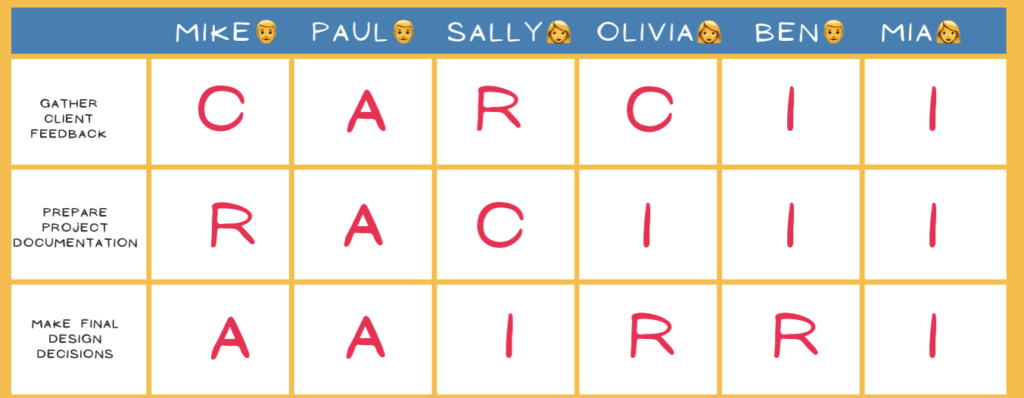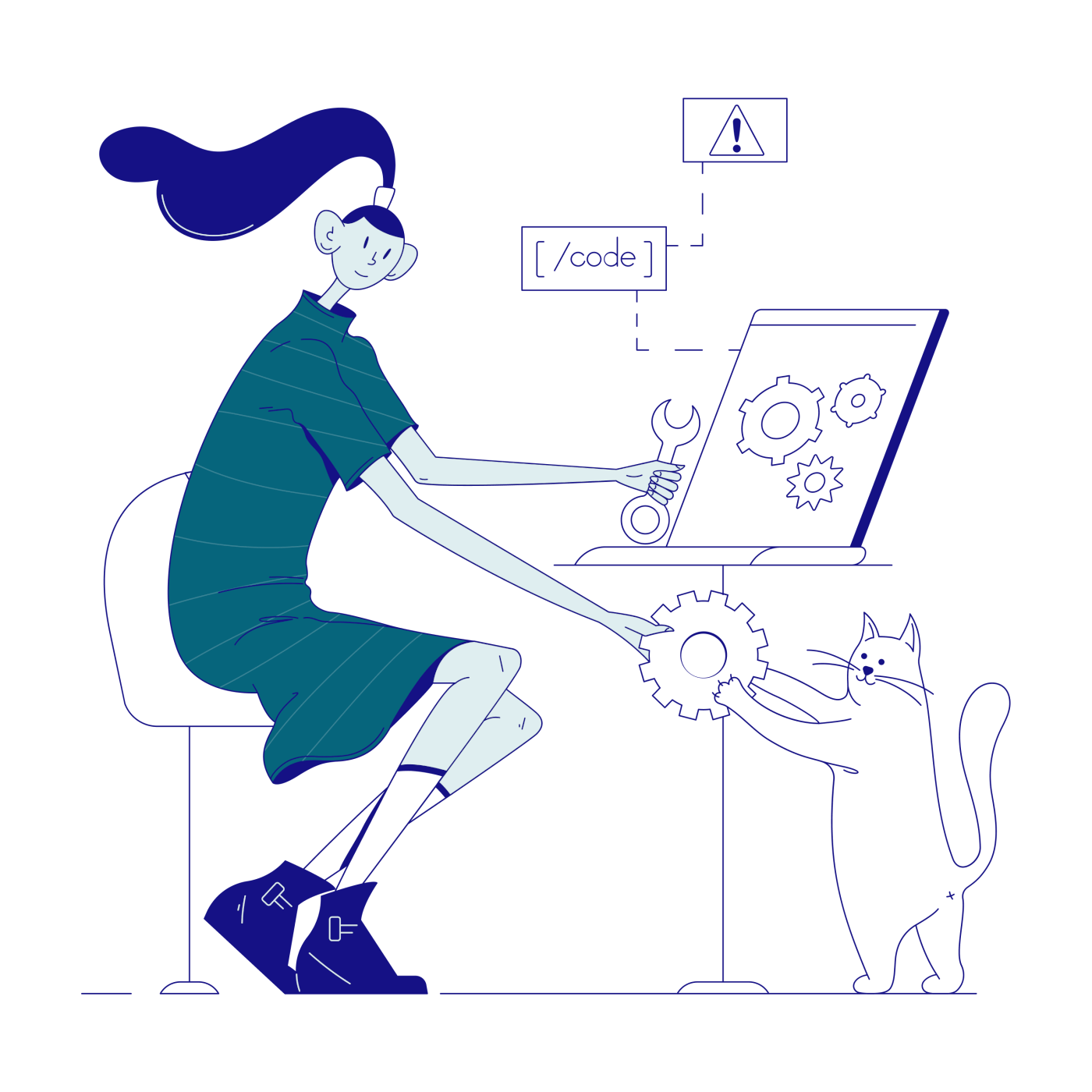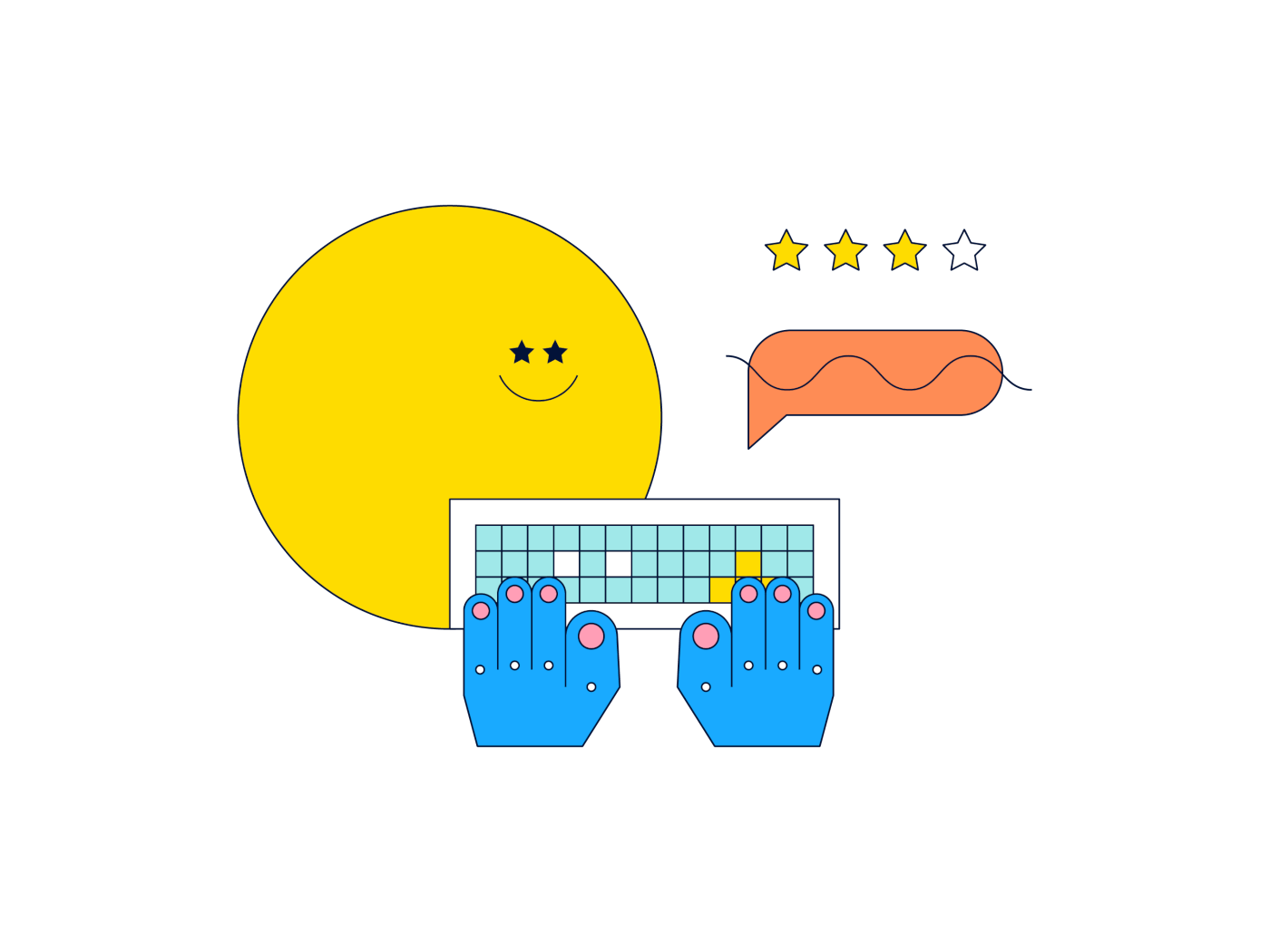Does making decisions at your remote team feel like a tug of war? Or is it more like The Council of Elrond with only a select few privy to the proceedings? The good news is remote decision-making doesn’t have to be that difficult (and slow).
In today’s article, we’ll help you build a remote decision-making framework for your team. Oh, and we’ll also answer a few questions while doing so. 👇
- 🌟 Why is remote decision-making important?
- 🚧 What makes it so difficult?
- 🙋♂️ How to reach a painless consensus?
💡 Before you go… This guide is part of our series on remote team management. Be sure to check other similar articles when you’re done reading.
- ⚡️ Team Productivity Guide: How to Build Faster Remote Teams
- 🧠 How To Build a Second Brain
- 📝 Stay Organized with Collaborative Note-Taking
🤷♀️ Remote Decision-Making? Why Bother?
Making quick, accurate, and informed decisions in a business setup is a fine challenge. But what if you need to tick all those boxes over several time zones?

“How You Make a Decision” by BuzzFeed(1)
Here’s the thing. Remote teams can move much faster than their co-located counterparts. And no, you don’t have to micromanage or stay online 24/7 to achieve that.
“Unless formally required by your organization, none of these require people to be in the same “place” at the same time: everything can happen asynchronously.”
Bertrand Delacrétaz, Principal Scientist, Adobe(2)
Creating a remote decision-making framework will make your team more agile and autonomous. And the best part? You’ll be less inclined to approve every trifle and have more time for the work that really matters.
But first, let’s clear a few things out of the way, shall we?

🚧 3 Remote Decision-Making Challenges
1. Time-Zone Differences
Geographically dispersed teams need to be conservative about how they use their time. A narrow daily overlap is often the only chance to:
- 🗓 Schedule a meeting
- 👆 Debrief and give feedback
- 💬 Discuss ongoing matters
- ⏰ Make time-sensitive decisions
Whether we like it or not, most decisions in a remote workplace are asynchronous. If you want your team to move fast, you need to make the best use of asynchronous communication and teach others how to use it effectively.
2. Video Conferencing Maladies
The pandemic has crowned video conferencing key communication channel. But we’re still a long way from getting it right.
- ⚙️ Technical obstacles
- 👎 Low participation
- 🎮 Distractions at home
- 🤯 Too many/too long meetings
- 🗓 Scheduling problems
Getting everybody on the same page amidst all that chaos isn’t exactly a walk in the park. When you add “zoom fatigue” and limping nonverbal communication to the pot, reaching a consensus becomes a remote (pun intended) perspective.
3. Dealing with Static
Remote communication often feels like a game of dead call. The output information is either partial, distorted, or complete gibberish.
Even if your team has a central communication hub (more on that in a bit), chances are they still discuss project-related matters via DMs and 1-on-1 calls. The result?
- 👥 Communication silos
- 🤫 Low transparency
- 🤷♂️ Lack of trust
- ❌ Knowledge gaps
- 📉 Poor collaboration
You can’t expect your team to move fast if they constantly need to figure things out on their own. The same is true for decisions made behind (figurative) closed doors.
🧰 Remote Decision-Making Essentials
If you want to increase decision-making speed, you need two things: a reliable decision-making framework and a communication/collaboration hub. The tips & tricks from this article will help you nail the first one. As for the other end of the decision-making toolbox… Taskade is here to help. 👇
Taskade is an AI-powered project and task management platform that allows remote teams to discuss and work on projects in the same window, in the same app. Just so you don’t have to shuffle multiple tools or rummage through documents during a meeting.
Watch this short video to learn how you can organize your work in Taskade:
Taskade comes with a set of holistic AI features powered by OpenAI’s GPT-4 Turbo language model.
🤖 Custom AI Agents: Automate routine tasks, streamline workflows, and optimize project efficiency with customizable AI agents you can train on documents and online resources.
🪄 AI Generator: Plan and structure projects, create detailed document outlines, and speed up workflows so your team can focus on the work that really matters.
✏️ AI Assistant: Boost collaboration and communication with an AI assistant that helps organize tasks, prioritize action items, and improves writing in the project editor.
💬 AI Chat: Get quick and informed responses to team queries with AI Chat. The AI Chat will help you and your team understand complex topics and distill contextually relevant information.
🔀 AI Files/Document Converter: Convert detailed reports into concise summaries and turn spreadsheets into visual formats to amplify team intelligence.
📄 Media Q&A: Interact with your documents using AI Chat’s conversational interface to extract key insights, develop ideas, and clarify concepts.
🗂️ AI Prompt Templates Library: Use a wide range of AI prompts to spark creativity and make the most of the AI features built into Taskade.

🤝 A-Level Framework for Remote Consensus
1. Make Time for Decisions
When Larry Page returned to Google in 2012, he introduced several tweaks to the company meeting dynamic. The most important of them? Decisions over meetings!
“If a meeting absolutely has to happen before a decision should be made, then the meeting should be scheduled immediately.”
Kristen Gil, VP of Business Operations, “Start-Up Speed”(3)
Ok, so what does this mean for a distributed team? How do you cram all the organizational hassle into an hour or two of overlap time?

Well, you don’t. Instead, get comfortable with the idea of making most decisions asynchronously! 👇
- 💬 Embrace asynchronous communication. Chat and email are your best friends. Overcommunicate and be very specific about your expectations. Discuss critical business decisions in a shared communication space. Root out communication silos and Avoid DMs to increase transparency.
- 🔎 Probe and survey If you can’t avoid a meeting, send out surveys and proposals to establish expected outcomes. Shorten the decision-making process by securing stakeholders’ buy-in early on.
- ☝️ Narrow down the scope. If the outcome doesn’t affect all team members/roles, involve the minimum viable number of stakeholders. Be sure to keep the rest of the team informed once the decision has been made.
- 📚 Leverage team knowledge. Provide the resources and relevant documentation to all stakeholders. Keep wikis and knowledge bases (more on that in a bit) up to date and accessible 24/7.
Of course, not all decisions can be made asynchronously and you’ll have to call a meeting. Check our article Subtract the Distance With a Virtual Meeting Checklist to make the most of your video conferences.
2. Use an off-the-Shelf Framework Like RACI
There are many reliable decision-making frameworks you can implement in your distributed team. One of the most popular is the Responsibility Assignment Matrix.
RACI—an acronym for responsible, accountable, consulted, informed—is a powerful project management tool for defining roles and responsibilities in project teams.
- 👷♂️ (R)esponsible. Team members/stakeholders responsible for carrying out a specific task or completing part of the project. A project team can have more than one Responsible.
- 👮♀️ (A)ccountable. A team member/stakeholder who assigns tasks and signs off deliverables. There should be only one accountable per project/team.
- 🧙♂️ (C)onsulted. Subject-matter experts your team can consult regarding the project, tasks, and deliverables. Consulted include team members with relevant expertise.
- 👩🎓 (I)nformed. People who need to be in the know about overall project progress. The entire project team may be assigned this status for increased transparency.
Using RACI will help you increase transparency, boost ownership, and reduce friction. All that will stack up to more efficient and faster remote decision-making.
To create a RACI matrix for any kind of project/decision:
- 👥 Determine who’s involved in the project.
- 🤔 Define their roles (you can use names instead).
- ✅ Make a list of tasks/action items.
- ➕ Pair stakeholders/team members with specific tasks.
- 🤝 Get your team on board.

To make your job easier, we created a simple, reusable RACI template. Copy it to your workspace, edit, and share with the team to get started!
3. Increase Team Autonomy
A truly autonomous remote team sounds like an urban legend, right? But if you want your team to move fast, you must part with some control.
“As a senior executive, what do you really get paid to do? You get paid to make a small number of high-quality decisions. Your job is not to make thousands of decisions every day.”
Jeff Bezos, “Thinking three years out” via Fast Company(4)
Bezos’ advice perfectly captures the critical ingredient of effective remote teams. When you empower and trust your team to make the right choices—even if they’re initially low-impact decisions—you don’t have to keep your finger on the pulse 24/7.

Here’s why you shouldn’t micromanage.
“What Group Projects Taught Me” by Endless Origami via HuffPost(5)
Don’t feel like delegating tasks and responsibilities? You risk bottlenecking your team’s performance and becoming the (micro)manager of the year. 👇
“You stunt your team members’ development and demoralize them. You create an organizational vulnerability when your team isn’t used to functioning without your presence and heavy involvement.”
Muriel Maignan Wilkins, Signs That You’re a Micromanager via HBR(6)
Your best bet is to let your team know that you trust their judgment. Give them all the tools and resources and let them flex those decision-making muscles.
And that takes us to the next tip on our list.
4. Invest in Team Knowledge
Empowering your team to act autonomously is just the first step. You also want to provide them with intel and resources so their decisions are informed and more accurate.
“The challenges of today and tomorrow dictate that for success information must be located quickly, and once it is located, people must have confidence in its accuracy to be able to use it to solve a specific problem […]”
Ginger Levin via The Project Management Institute(7)
Not sure where to start? Every remote team needs a decentralized knowledge repository for storing, organizing, and retrieving information. This can include:
- 🗂 Company/team wiki
- 💡 Internal knowledge base
- 📑 Document templates
- 📀 Video/audio training materials
- 🗄 Team Zettelkasten/Second Brain
- 📨 Company blog/newsletter
- 🖥 E-learning platform
Each of those assets will give your team a reliable source of information they can refer to when at the crossroads. A single source of truth will also help you cut down on pesky back-and-forths down the road.
Be sure to read our article How To Build a Second Brain for Distributed Teams if you want to learn more about remote knowledge management.
5. Bonus Point: Avoid Analysis Paralysis
You think you’ve found the perfect solution to a problem or made the right decision only to spiral down the limbo of doubt and hesitation shortly after. Sounds familiar?

Be like Gandalf. Always have a way out.
“Gandalf Problem Solving, a Flowchart” by LotrProject(8)
Analysis paralysis is a common problem in group decision-making. The more people are involved in the process, the more likely it is to create bottlenecks and halt progress.
- “Is A really better than B?”
- “Should we consider C, just in case?”
- “What about D, E, F…?”
- “Who should sign this off?”
- “What can possibly go wrong?”
Accounting for all possible scenarios is hardly possible in a remote setup. Instead, your team should be able to quickly recognize the type of decision and act on it.
When in doubt, use Jeff Bezos’ philosophy and categorize decisions depending on their IRREVERSIBILITY and CONSEQUENTIALITY:
“[…] I often find myself at Amazon acting as the chief slowdown officer: ‘Whoa, I want to see that decision analyzed seventeen more ways because it’s highly consequential and irreversible.’ The problem is that most decisions aren’t like that. Most decisions are two-way doors.”
Jeff Bezos, “Thinking three years out” via Fast Company(3)
Here’s an excellent visual guide by Dr. Rufus Pollock. 👇

Jeff Bezos’ Decision-Making Matrix by Dr. Rufus Pollock(9)
And that’s it! 👍

🐑 Parting Words
Reaching consensus across time zones doesn’t have to be a hassle. All you need is a robust, reusable solution your team can put to work when at the crossroads.
- 🔥 Clear up common remote work obstacles.
- 🧰 Build a remote decision-making toolbox.
- 📑 Create a reliable framework for your team.
- ☝️ Make the right decision 9 times of 10.
- 🔄 Rinse and repeat!
By implementing the tips from our article, you’ll give your team more breathing room and empower them to make faster and more informed choices.
Need extra help to keep your remote team in sync?
Embrace the future of remote teamwork with Taskade. Unlock AI-powered features to drive better decisions, foster effective communication, and lead your team to better productivity.
🔗 Resources
- https://www.buzzfeed.com/benhenry/charts-indecisive-people-will-understand#.jxl4NGyXw
- https://archive.fosdem.org/2018/schedule/event/community_decision_making_why_how/
- https://web.archive.org/web/20121005065400if_/
- https://www.thinkwithgoogle.com/quarterly/speed/start-up-speed-kristen-gil.html
- https://www.fastcompany.com/90578272/how-jeff-bezos-makes-decisions
- https://www.huffpost.com/entry/what-group-projects-taught-me_n_1097597
- https://hbr.org/2014/11/signs-that-youre-a-micromanager
- https://www.pmi.org/learning/library/knowledge-management-success-generate-value-6656
- http://lotrproject.com/blog/2013/01/09/gandalf-problem-solving-a-flowchart/
- https://rufuspollock.com/2020/05/18/jeff-bezos-fast-high-quality-decision-making/



 How to Plan Effective Project Team Meetings: Strategies for Success
How to Plan Effective Project Team Meetings: Strategies for Success  14 Best AI Tools for Planning and Running Meetings
14 Best AI Tools for Planning and Running Meetings  Creating Customer Service SOPs: A Guide for Streamlining Your Support
Creating Customer Service SOPs: A Guide for Streamlining Your Support  15 Top AI Content Marketing Tools for Remote Teams
15 Top AI Content Marketing Tools for Remote Teams  9 Top AI Brainstorming Tools for Virtual Teams in 2025
9 Top AI Brainstorming Tools for Virtual Teams in 2025  14 Best AI Collaboration Tools for Remote Teams (Updated 2025)
14 Best AI Collaboration Tools for Remote Teams (Updated 2025)